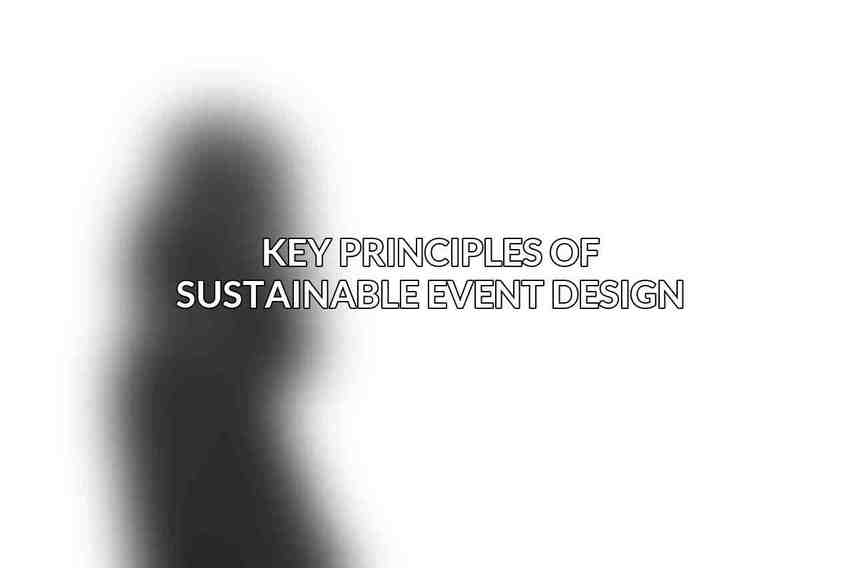Sustainable event design involves planning and organizing events in a manner that minimizes negative impacts on the environment, supports social responsibility, and ensures economic viability. It focuses on reducing waste, conserving resources, and promoting ethical practices throughout the event planning process. By considering sustainability in event design, organizers can contribute to a healthier planet and create more meaningful experiences for attendees.
When planning an event, it is crucial to consider sustainability to reduce the environmental footprint and promote long-term well-being. Sustainable event design is essential as it aligns with the growing global awareness of our environmental impact and the need for businesses and individuals to adopt more eco-friendly practices. Embracing sustainability in event planning is not only a responsible choice but also a strategic one that can enhance the overall experience and reputation of an event.
The benefits of incorporating sustainable practices in event design are multifaceted. Sustainable events not only help to protect the environment by reducing waste and carbon emissions but also demonstrate a commitment to social responsibility and ethical business practices. Additionally, sustainable event design can lead to cost savings, increased efficiency, and a positive impact on the community and stakeholders involved.
Key Principles of Sustainable Event Design

Sustainable event design is guided by key principles that focus on reducing environmental impact, enhancing social responsibility, and ensuring economic viability. By following these principles, event organizers can create memorable and eco-friendly experiences for attendees.
A. Reduce environmental impact
-
Minimize waste: Implementing strategies to minimize waste generation during an event is crucial. This can include reducing single-use items, encouraging recycling, and avoiding excessive packaging.
-
Conserve resources: Utilizing resources efficiently and opting for sustainable alternatives can help reduce the environmental impact of events. Choosing renewable energy sources and eco-friendly materials is a step in the right direction.
-
Reduce carbon emissions: By minimizing travel distances, opting for green transportation options, and using energy-efficient practices, event organizers can significantly reduce carbon emissions associated with events.
B. Enhance social responsibility
-
Support local businesses: Collaborating with local suppliers and businesses not only supports the community but also reduces the carbon footprint associated with transportation and logistics.
-
Promote fair trade practices: Prioritizing fair trade products and ethical sourcing practices promotes social equity and environmental stewardship.
-
Respect community values: Understanding and respecting the cultural and social values of the community where the event takes place is essential to ensuring that the event has a positive impact on local stakeholders.
C. Ensure economic viability
-
Consider cost-effective solutions: Sustainable practices can often lead to cost savings in the long run. By investing in sustainable solutions upfront, event organizers can achieve economic viability while benefiting the environment.
-
Explore revenue-generating opportunities: Incorporating sustainable practices can appeal to eco-conscious attendees and sponsors, creating new revenue streams for events.
-
Seek sponsorships and partnerships: Collaborating with organizations that share a commitment to sustainability can provide financial support and resources to enhance the eco-friendly aspects of an event.
Stay tuned for the continuation of this article with a focus on materials, waste management, event venues, and more.
Frequently Asked Questions
What are some key principles of sustainable event design?
Some key principles of sustainable event design include minimizing waste, reducing energy consumption, using eco-friendly materials, and promoting local and ethical vendors.
How can I incorporate sustainability into my event design?

You can incorporate sustainability into your event design by using recyclable or biodegradable materials, opting for digital invitations instead of paper, encouraging carpooling or public transportation, and choosing a green venue.
What are some eco-friendly decor options for events?
Some eco-friendly decor options for events include using potted plants instead of cut flowers, renting or borrowing decorations instead of buying new, using LED lighting, and repurposing materials like wood pallets or mason jars.
How can I reduce waste at my event?
You can reduce waste at your event by serving food and drinks in compostable or reusable containers, providing recycling bins for guests to use, and offering water stations instead of plastic bottles.
Is it more expensive to create sustainable event designs?
At first, it may seem more expensive to create sustainable event designs due to the cost of eco-friendly materials and practices. However, in the long run, sustainable events can actually save money by reducing waste and energy consumption.
wp:html –>
/wp:html –>
wp:html –>
/wp:html –>
